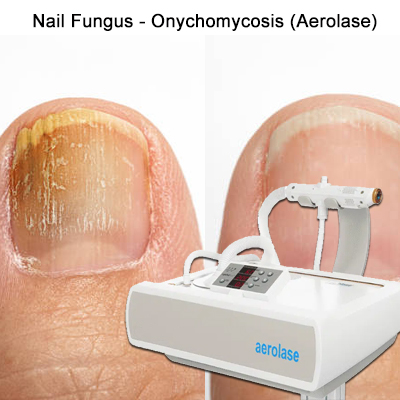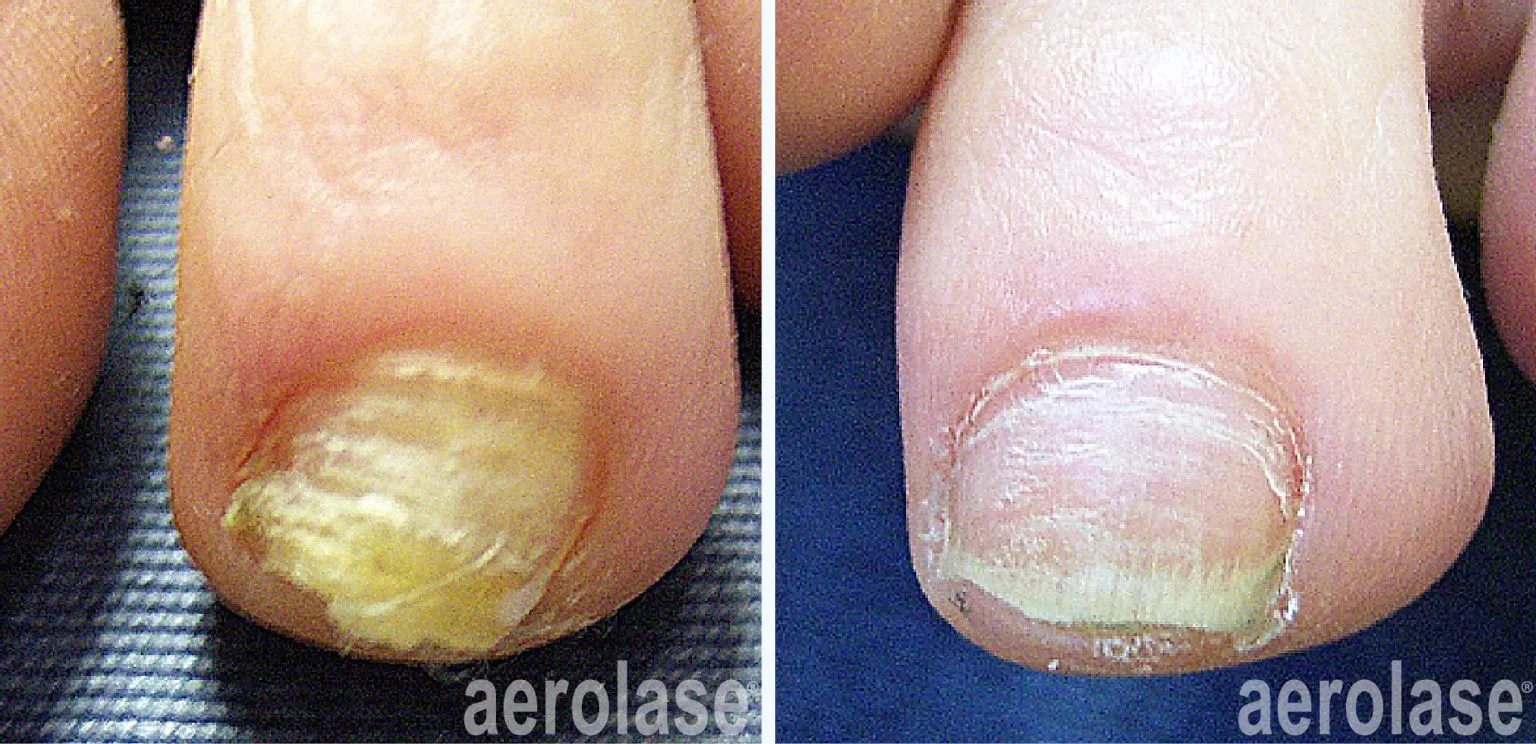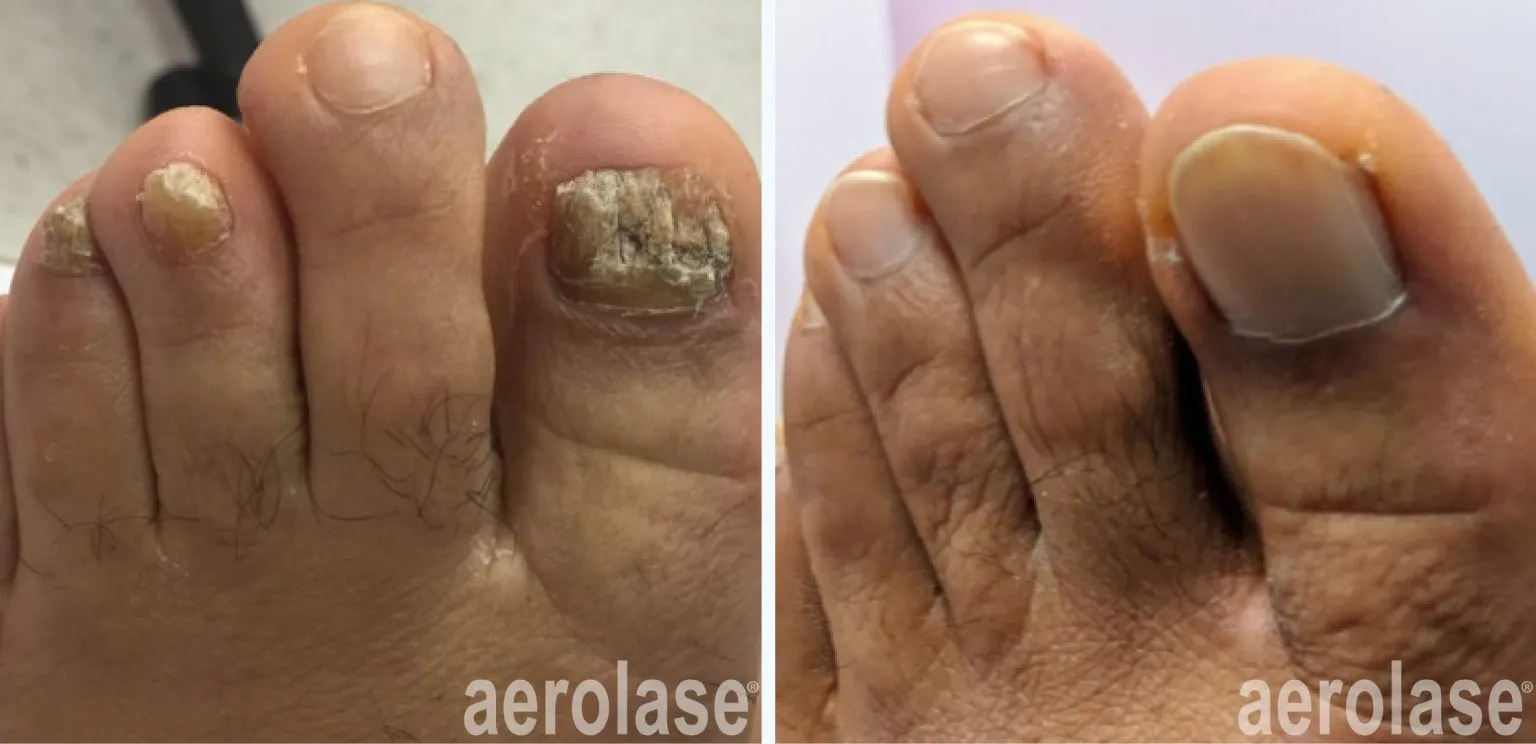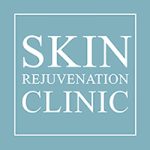
How the Aerolase Laser Works
The Aerolase laser utilizes a 650-microsecond pulse technology, enabling light energy to penetrate the nail and target the underlying fungus without harming the nail or adjacent skin. This method heats and eradicates the fungal cells, effectively addressing the infection at its core.
Advantages of Aerolase for Nail Fungus
Minimally Invasive and Pain-Free
The Aerolase laser’s minimally invasive nature is one of its key advantages, offering a convenient solution for those with busy lifestyles.
High Success Rates
Research and clinical trials have shown that Aerolase laser treatments for nail fungus are highly successful. Many patients achieve clear, fungus-free nails after a series of sessions.
Book Your Free Consultation Today Or Call 647-360-6839
Implementing Aerolase in Nail Fungus Management
The Treatment Process
Aerolase treatment consists of multiple laser sessions, usually spaced weeks apart. Each session, lasting about 15-20 minutes, targets all affected nails to address the fungus thoroughly.
What Patients Can Expect
Patients can expect gradual improvements in their nail condition as healthy nails grow. The required number of treatment sessions can differ depending on the infection’s severity, yet substantial improvement is often observed between three to six months.

Combining Aerolase with Preventive Measures
Combining laser treatment with preventive practices is advisable to enhance Aerolase treatment outcomes and prevent recurrence. These include keeping feet dry and clean, wearing breathable shoes, and avoiding communal showers or pools.
Navigating the Path to Fungus-Free Nails
Choosing the Right Specialist
Choosing a healthcare provider with expertise in Aerolase laser treatments is essential for the best treatment results. A skilled professional will evaluate the condition, craft a tailored treatment plan, and offer expert guidance throughout the treatment journey.
Setting Realistic Expectations
Patients need to maintain realistic expectations about the treatment duration and results. Aerolase has a high success rate, but nail fungus treatment takes time, and patience is crucial for achieving the desired outcomes.

The Future of Nail Fungus Treatment
Aerolase’s effectiveness in treating nail fungus represents a significant stride in dermatology and podiatry, emphasizing the role of technological progress in tackling prevalent health issues. Continued research and technological advances are expected to improve treatment standards, leading to more successful, streamlined, and patient-focused approaches for managing nail fungus and similar intricate health issues.
Conclusion
Aerolase laser technology has transformed the approach to nail fungus treatment, providing a secure, potent, and minimally invasive option for this common ailment. Aerolase’s precise targeting and destruction of fungal cells without harming adjacent tissues substantially improve managing onychomycosis. Offering a comfortable, downtime-free treatment with impressive success rates, Aerolase laser therapy addresses the physical aspects of nail fungus and boosts patients’ overall well-being. This advanced treatment method makes the prospects for overcoming nail fungus more promising.

